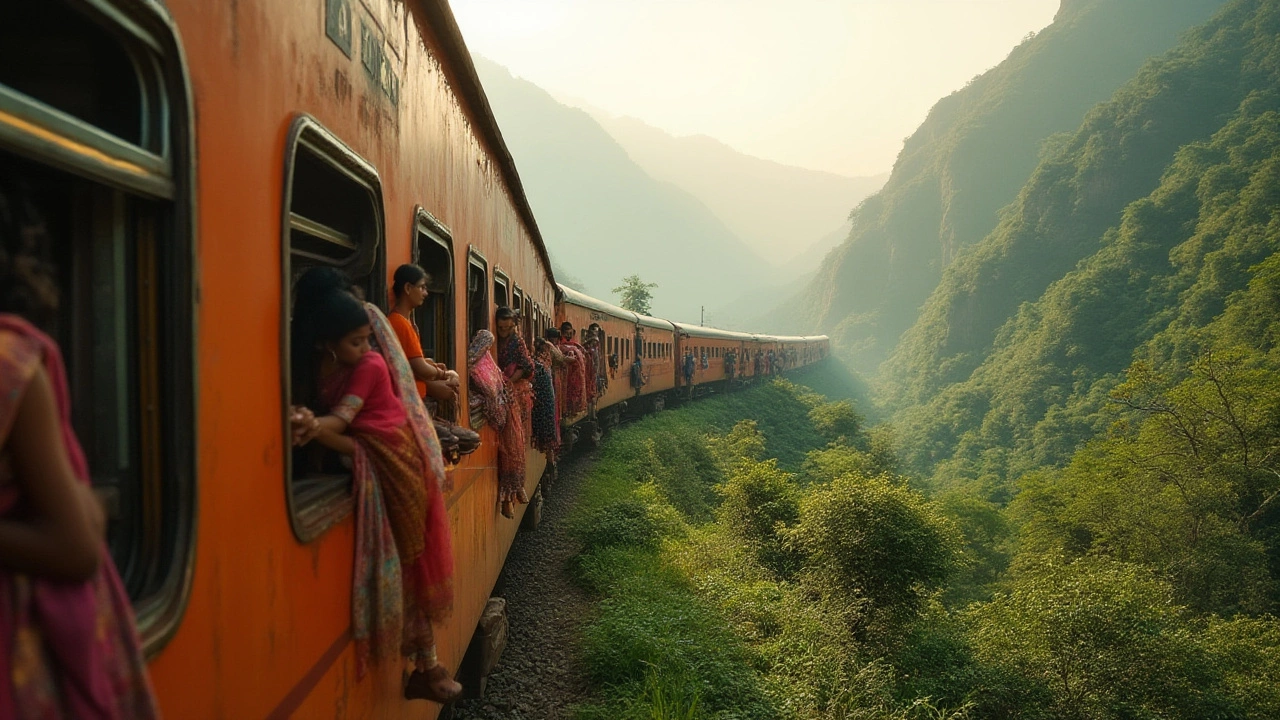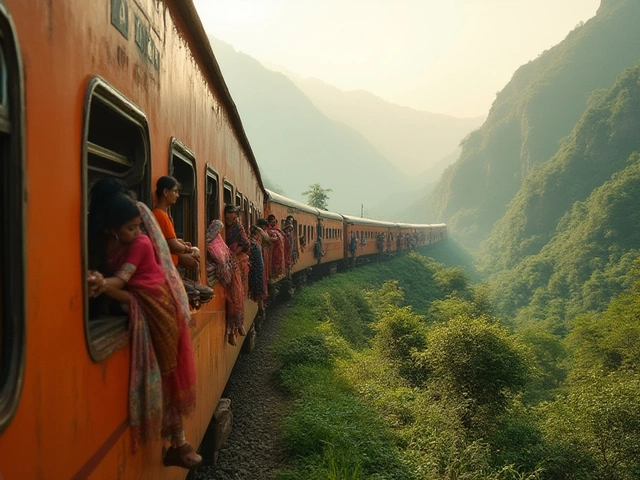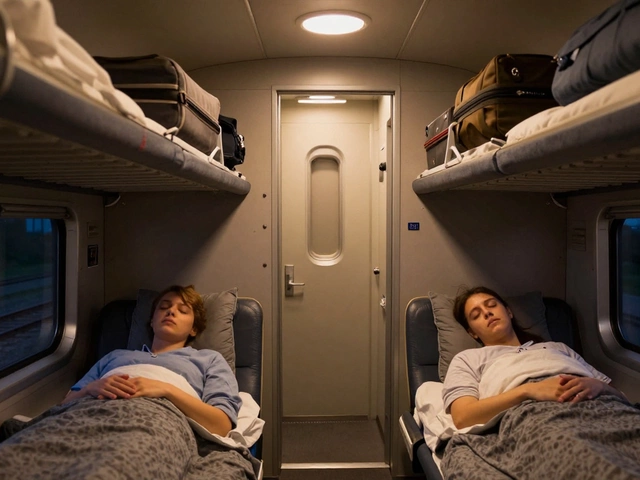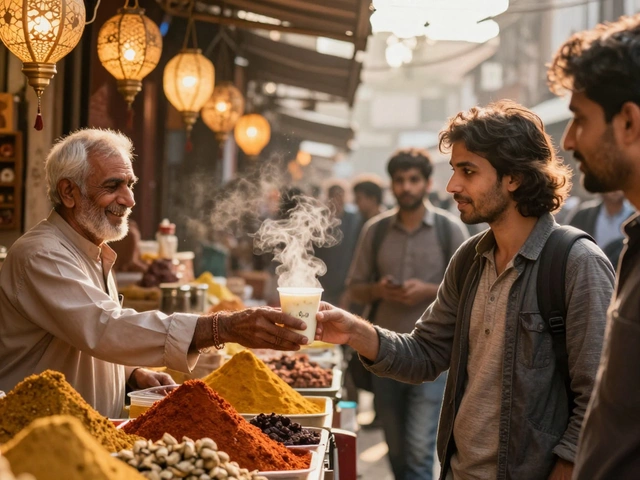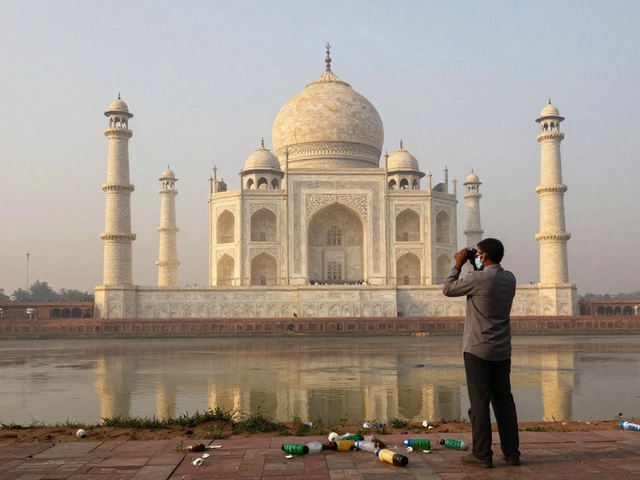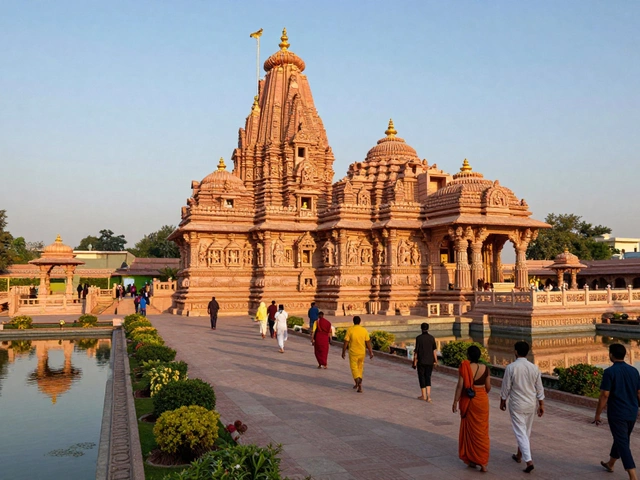The air smells like pine, the valleys stretch for miles, and there's something hypnotic about the rhythmic clickety-clack under your feet. If you've ever felt the urge to drop everything for a window seat on a world-famous train, you're not alone. Travelers argue endlessly about which route snags the title of ‘most beautiful train journey in the world,’ and honestly, the debate is as dramatic as the landscapes themselves. Yet, there’s one name that comes up over and over, almost like an urban legend among rail enthusiasts: the Trans-Siberian Railway. From Moscow, across six time zones to Vladivostok, this is not just a train ride. It's a voyage into cultural history, fierce wilderness, and endless horizons.
The Trans-Siberian line is known for its mind-boggling 9,288 kilometers of track—yep, that's longer than the distance from Brisbane to Paris as the crow flies. But here's a little shocker: you don’t have to ride the whole thing to say you've ‘done’ it. Many people opt for Trans-Mongolian or Trans-Manchurian branches, which splinter off to Beijing, each with their own charms. It takes a minimum of seven days if you never leave the train, but what’s the fun in that? The magic is in hopping off, soaking up markets in Irkutsk, skirting the frozen edges of Lake Baikal, and stepping out into forests that feel almost untouched by time. Most seasoned travelers break up the journey into chunks that last anywhere from two days to a week between stops. It’s a marathon through the heart of Russia, Mongolia, or China, with every kilometer rolling out a different tale.
The landscape flips like a slideshow that refuses to be boring: golden wheat fields, birch forests that look like they’re in a fairy tale, rugged Ural mountains, and then – boom – the glassy, endless blue of Lake Baikal, the world’s deepest lake. Sometimes it gets so cold in the winter the lake steams, and local fishermen sell smoked omul right near the track. In summer, flower fields stretch out like a watercolor, sending a whiff of grass into your carriage when you open a window. Nighttime brings its own kind of show as stars pop out over the taiga, and if you're lucky, you’ll catch the Northern Lights twirling overhead. Want to know a fun detail? On board, the train is always on Moscow time, even when Vladimir Putin’s dog could barely sniff out a Muscovite anywhere nearby. It’s bewildering at first, especially when you wander off at a midnight station stop, the clock tells you one thing, but the sky another. That disorientation is a rite of passage on this epic ride.
What Sets the Trans-Siberian Railway Apart?
Maybe you’re more of a romantic who dreams of Swiss Alps, or the lush New Zealand countryside, right? Those are stunning, no question, but the Trans-Siberian Railway is in a different universe. It's the longest continuous rail line in the world—a golden detail for anyone check-listing ultimate travel bragging rights. But stats aside, it’s the wild variety it throws at you—12 major rivers, 87 cities, dozens of ethnic languages and foods—one day you’re biting into sour Russian bread, the next you’re slurping Mongolian noodle soup. The sense of real adventure here doesn’t exist on the Venice Simplon-Orient-Express or the Glacier Express, beautiful as those train journeys are. The Trans-Siberian is for those with a little grit. There's just as much life off the rails as there is on, with stopovers where locals sell fresh pierogis on platforms or where you find yourself wandering Chita’s deserted streets at dawn, feeling like you stepped onto a movie set.
The comfort levels vary by train and by ticket: there’s 'platzkartny' (open dorm bunk beds for those who want the richest stories and snoring companions), 'kupe' (quieter 4-berth compartments for a little privacy), and 'SV' (the higher-end, two-bed cabins). Booking in advance helps if you want a specific class or are nervous about shared spaces. Most trains now offer samovars (endless hot water for tea), but hot showers? That's still a luxury. Charge up your power banks: sockets do exist, but they aren’t always reliable. Download offline maps, and have a stash of cash—ATMs are tricky in the wild stretches, and credit cards sometimes draw a blank stare. You’ll soon learn that vodka on the restaurant car is not just tradition but a way to mingle; even if you’re not fluent, a raised glass says plenty.
Now, let’s throw in a few comparisons—because surely someone is scanning for the Glacier Express in Switzerland or the Rocky Mountaineer in Canada. The Glacier Express is a miracle of engineering, for sure, threading through 291 bridges and 91 tunnels with those panoramic dome windows. But it’s comfortably short (usually less than eight hours), chic, and polished—the kind of ride where you wear your best scarf and pose for Instagram. The Rocky Mountaineer carves through the Canadian Rockies, offering jaw-dropping wild landscapes and gourmet food, but it's mostly a daylight journey over a couple of days. Legendary, yes, but the sense of journey—that wear-it-on-your-sleeve wanderlust—is still more raw on the Trans-Siberian.
Respected travel writer Paul Theroux, who rode the train for his classic book "The Great Railway Bazaar," put it best:
"Anything is possible on the Trans-Siberian. It is more than a railway; it is a moving village, a mixture of centuries, a window not just to Russia but to yourself."That sense of possibility is what sets this railway apart. You get stories, you get weirdness, you get soul. One British survey by Rail Europe found that over 25% of serious train buffs rate the Trans-Siberian as their ‘ultimate dream route,’ edging just above both the Orient Express and South Africa’s Blue Train for the sense of escapade it carries.
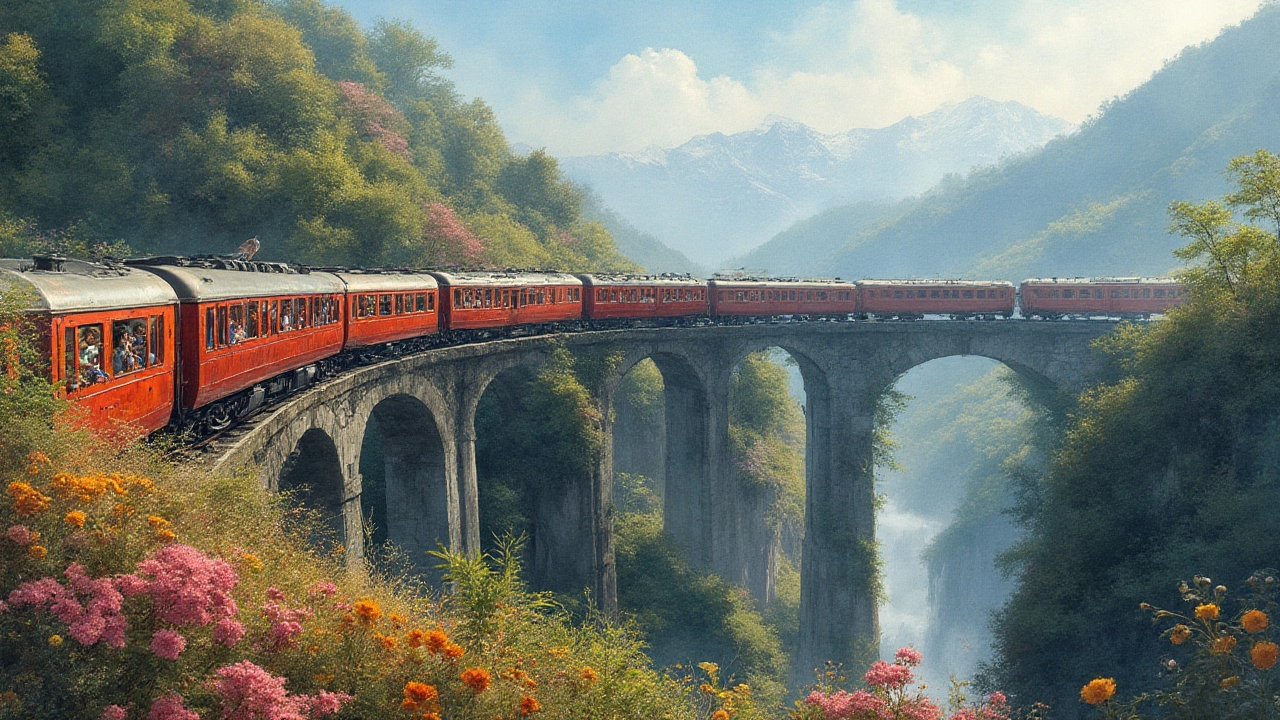
Tips for Experiencing Your Own Epic Train Adventure
Let’s say you’re inspired, ready to toss your beach holiday aside for a ticket into the wild yonder. Before you grab your Russian phrasebook, here’s the kind of guide I wish someone had given me. First up: when to go? Winter stretches from November to March and isn’t for the faint-hearted—the cold bites harder than a bad ex, but you get mystical snowy forests, frozen rivers, Northern Lights, and far fewer tourists. Summer runs June to August, bringing warmer air and longer daylight for photo ops, but also more crowds and higher prices. May and September are excellent shoulder seasons for balance. Don’t stress about booking the whole way through; many travelers buy tickets segment by segment, which gives flexibility to linger where you feel the magic.
You’ll want a good sleeping mask (Russian trains adore keeping the lights on), a phrasebook, wet wipes (showers can be iffy), slippers for walking around, and a hearty stash of snacks for when the restaurant car’s boiled potatoes start to blot out your dreams. The security is generally good, but keep your passport and money in a money belt, especially when you’re snoozing. If you’re nervous about language barriers, there are now private and guided train tours with English-speaking hosts, which can cost more but take the stress away, especially if crossing into Mongolia or China. Don’t skip out on platform stops: even a quick dash is enough to taste fresh pelmeni, stock up on local drinks, or high-five trading grandmas. Etiquette hint: Don’t crinkle packs of noodles at night while people are sleeping—the sideways glares are universal.
Health and safety? You’ll need a visa for Russia and potentially more if heading through Mongolia or China. Visa rules keep changing—so check official government sites or trusted agencies for the latest. Medical care is basic at best in remote zones, so travel insurance is a must. The good news: there are very few scams on these trains, but standard travel smarts apply. For vegans or vegetarians, stock up hard on snacks and instant oats; Russian and Mongolian menus do love their meat.
Curious about the numbers? Here’s a handy breakdown for key rides, distances, and journey lengths along major contenders for the ‘most beautiful’ title:
| Train Route | Distance (km) | Typical Journey Time | Highlight |
|---|---|---|---|
| Trans-Siberian Railway | 9,288 | 6-7 days non-stop | Taiga forests, Lake Baikal |
| Glacier Express (Switzerland) | 291 | 8 hours | Swiss Alps, Viaducts |
| Rocky Mountaineer (Canada) | 1,000 | 2 days | Canadian Rockies, Spiral Tunnels |
| Eastern & Oriental Express (SE Asia) | 2,000 | 3 nights | Thai Jungle, Malay Villages |
| Coastal Pacific (NZ) | 348 | 5 hours | South Island Coastline |
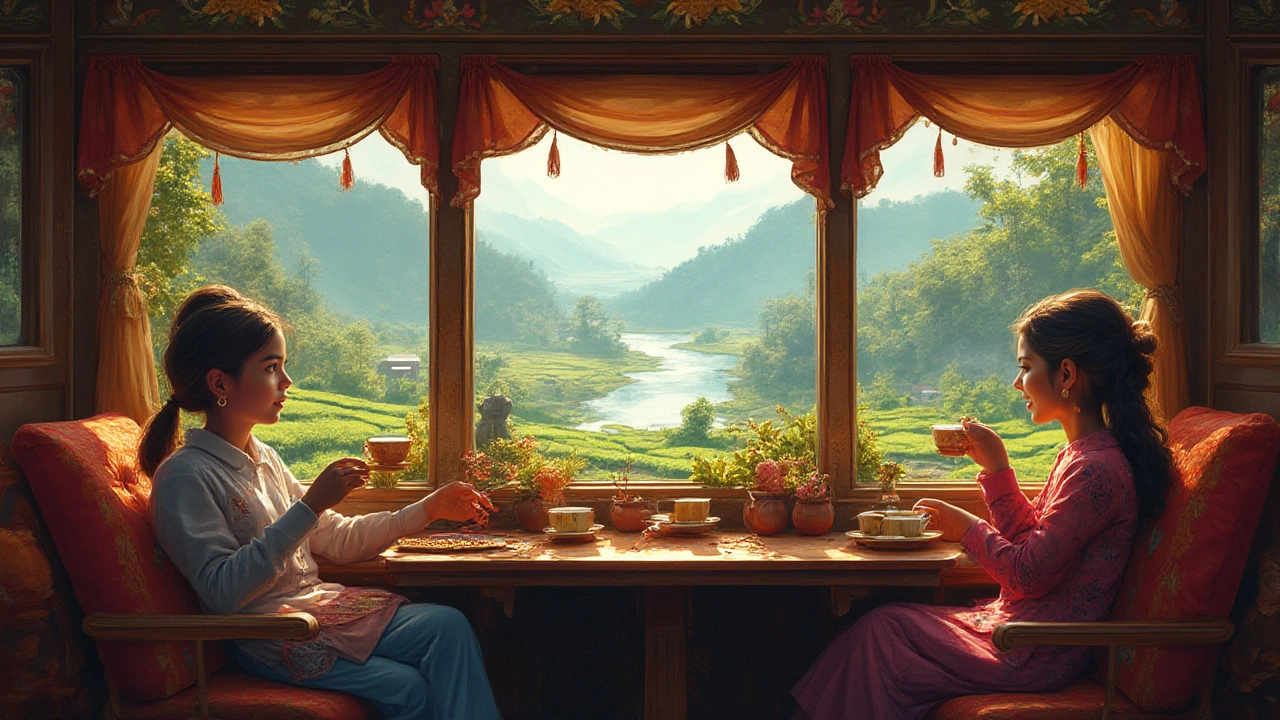
Other Top Contenders Around the World
The Trans-Siberian isn’t the only one worthy of the title—just the most iconic. But let’s wander a little. Fancy riding above clouds? Switzerland’s Glacier Express, running between Zermatt and St. Moritz, is nicknamed ‘The Slowest Express Train in the World.' It’s about savoring every inch of Alpine glamour—from ice-blue valleys to dizzying viaducts where you feel like you're teetering over the abyss. The cabins have panoramic windows—postcard views guaranteed.
Or maybe Canada's Rocky Mountaineer gets your pulse racing. Here, plush carriages sweep you through pine forests, misty mountain passes, turquoise lakes, and valleys where elk graze near the tracks. Passengers sip local wine, feast on fresh salmon, and spot bears from their window seats—wildlife safaris masquerading as train rides. Most opt for the daylight ‘Goldleaf’ service, which includes glass-domed viewing cars and gourmet meals inspired by the seasons.
If warm breezes and coconut trees are more your speed, Southeast Asia’s Eastern & Oriental Express promises rainforest mornings and orchids in the dining car. The trip from Bangkok to Singapore rattles gently through golden paddy fields and little villages, blending old-world elegance with a taste of the tropics.
Not forgetting our own southern hemisphere, the Coastal Pacific and TranzAlpine trains in New Zealand have gobsmacking sea cliffs, river gorges, and snow-capped peaks all stitched together in a relaxed, friendly Kiwi way. Each ride has a unique flavor, but the thread that links them all is this: trains give you time to simply look and think, to process where you are in the world. You don’t have to chase the next schedule; you just have to show up and watch the world slide past, as if you’re drifting through a living painting.
The most beautiful train journey in the world? That’s always going to be a personal call. Maybe you crave luxury, history, time to reflect—or just the simple thrill of a mug of tea and an ever-changing window full of wonder. That’s the joy of train travel: you never end up in quite the same place you began, no matter what the tickets say.
